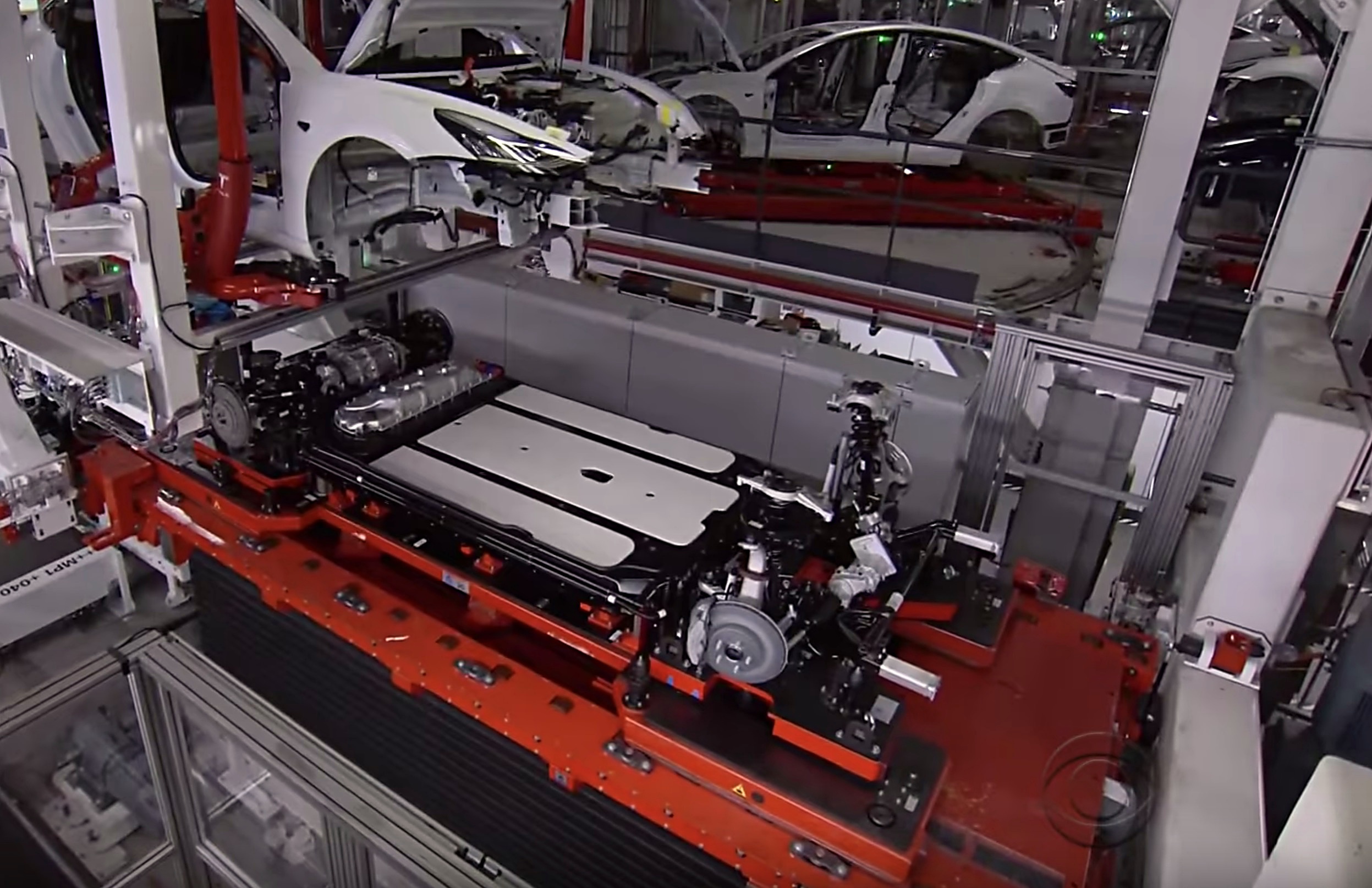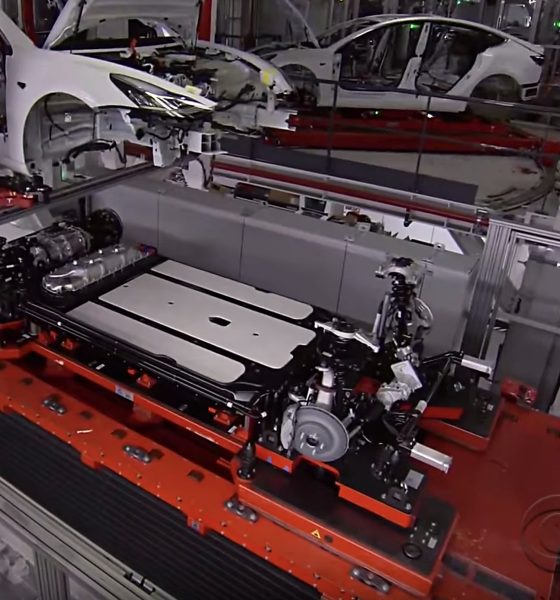

Investor's Corner
German teardown firm gives insight on Tesla Model 3 materials cost and battery composition
A German teardown company has stated that Tesla could make a profit with the Model 3. Speaking with German news agency WirtschaftsWoche, an engineer from the teardown firm stated that after analyzing and studying the vehicle, they concluded that the materials used in the Model 3 cost around $18,000 per vehicle.
The Model 3 has a base price of $35,000 for the standard range, RWD version. Currently, the premium variant of the compact electric car, the Model 3 Performance, is offered at $78,000 with all options except Autopilot. In a statement to WirtschaftsWoche, the engineer from the teardown firm stated that the Model 3 could ultimately contribute positively to Tesla’s earnings.
“If Tesla manages to build the planned 10,000 pieces a week, the Model 3 will deliver a significant positive contribution to earnings,” the engineer said.
Also notable were the conclusions of the German company about the Model 3’s battery pack. Laboratory results shared with WirtschaftsWoche noted that Tesla’s 2170 cells for the Model 3 consisted of 2.8% cobalt, 65% less than the industry average of 8%. Sven Bauer, Managing Director of Batterien-Montage-Zentrum (BMZ), one of Germany’s largest independent battery producers, stated that Tesla’s reduction in cobalt use can give the company a competitive advantage.
“That would be a significant competitive advantage for Tesla. Cobalt is currently very difficult to get on the world market,” Bauer said.
Tesla’s progress in its battery tech were highlighted in a recent report from advisory firm Benchmark Mineral Intelligence. According to BMI, Tesla has used less cobalt in its batteries since the days of the original Roadster and the Model S. With the Model S, for example, Tesla used up 11 kg of cobalt per car. Tesla is using 4.5 kg of cobalt for the Model 3, a 60% reduction.
Tesla’s improvements showcased in the Model 3’s 2170 battery cells were discussed during the company’s Q1 2018 Update Letter. According to the letter, the cobalt content of the company’s Nickel-Cobalt-Aluminum cathode chemistry is “already lower than next-generation cathodes that will be made by other cell producers with a Nickel-Manganese-Cobalt ratio of 8:1:1.” Such a ratio has not been attained by any competitor in the market so far.

The evolution of Tesla’s cobalt use over time. [Credit: Benchmark Mineral Intelligence]
The observations of the German firms about Tesla’s battery tech in the Model 3 echo the findings of Detroit veteran Sandy Munro, whose company, Munro & Associates, is also in the process of tearing down and analyzing the compact electric car. In a recent episode of Autoline After Hours on YouTube, Munro stated that the Model 3’s battery is the best in the industry today. Munro was particularly impressed with the .2-milliamp differential between the Model 3’s battery modules, stating that “nobody (in the industry) can balance batteries that close.”
Back in January, photographs emerged in the Tesla community showing the Model 3 being air-freighted to Germany. References to Stuttgart, which is where Porsche and Mercedes-Benz are based, were visible in the pictures. The German companies reportedly paid up to $230,000 for every Model 3 that they acquired.
Confirmation that German companies were analyzing the Tesla Model 3 came in February, when Georg Kacher, a journalist for German news agency Süddeutsche Zeitung, published an article stating that a “major German car company” was able to acquire a Model 3 for testing and analysis. According to Kacher’s report, the German company was surprised and impressed by the Model 3’s minimalistic design, especially in the vehicle’s interior, which was dubbed as “reminiscent of a completely cleared, black-washed Bauhaus living room.”

Investor's Corner
Tesla stock closes at all-time high on heels of Robotaxi progress

Tesla stock (NASDAQ: TSLA) closed at an all-time high on Tuesday, jumping over 3 percent during the day and finishing at $489.88.
The price beats the previous record close, which was $479.86.
Shares have had a crazy year, dipping more than 40 percent from the start of the year. The stock then started to recover once again around late April, when its price started to climb back up from the low $200 level.
This week, Tesla started to climb toward its highest levels ever, as it was revealed on Sunday that the company was testing driverless Robotaxis in Austin. The spike in value pushed the company’s valuation to $1.63 trillion.
Tesla Robotaxi goes driverless as Musk confirms Safety Monitor removal testing
It is the seventh-most valuable company on the market currently, trailing Nvidia, Apple, Alphabet (Google), Microsoft, Amazon, and Meta.
Shares closed up $14.57 today, up over 3 percent.
The stock has gone through a lot this year, as previously mentioned. Shares tumbled in Q1 due to CEO Elon Musk’s involvement with the Department of Government Efficiency (DOGE), which pulled his attention away from his companies and left a major overhang on their valuations.
However, things started to rebound halfway through the year, and as the government started to phase out the $7,500 tax credit, demand spiked as consumers tried to take advantage of it.
Q3 deliveries were the highest in company history, and Tesla responded to the loss of the tax credit with the launch of the Model 3 and Model Y Standard.
Additionally, analysts have announced high expectations this week for the company on Wall Street as Robotaxi continues to be the focus. With autonomy within Tesla’s sights, things are moving in the direction of Robotaxi being a major catalyst for growth on the Street in the coming year.
Elon Musk
Tesla needs to come through on this one Robotaxi metric, analyst says
“We think the key focus from here will be how fast Tesla can scale driverless operations (including if Tesla’s approach to software/hardware allows it to scale significantly faster than competitors, as the company has argued), and on profitability.”

Tesla needs to come through on this one Robotaxi metric, Mark Delaney of Goldman Sachs says.
Tesla is in the process of rolling out its Robotaxi platform to areas outside of Austin and the California Bay Area. It has plans to launch in five additional cities, including Houston, Dallas, Miami, Las Vegas, and Phoenix.
However, the company’s expansion is not what the focus needs to be, according to Delaney. It’s the speed of deployment.
The analyst said:
“We think the key focus from here will be how fast Tesla can scale driverless operations (including if Tesla’s approach to software/hardware allows it to scale significantly faster than competitors, as the company has argued), and on profitability.”
Profitability will come as the Robotaxi fleet expands. Making that money will be dependent on when Tesla can initiate rides in more areas, giving more customers access to the program.
There are some additional things that the company needs to make happen ahead of the major Robotaxi expansion, one of those things is launching driverless rides in Austin, the first city in which it launched the program.
This week, Tesla started testing driverless Robotaxi rides in Austin, as two different Model Y units were spotted with no occupants, a huge step in the company’s plans for the ride-sharing platform.
Tesla Robotaxi goes driverless as Musk confirms Safety Monitor removal testing
CEO Elon Musk has been hoping to remove Safety Monitors from Robotaxis in Austin for several months, first mentioning the plan to have them out by the end of 2025 in September. He confirmed on Sunday that Tesla had officially removed vehicle occupants and started testing truly unsupervised rides.
Although Safety Monitors in Austin have been sitting in the passenger’s seat, they have still had the ability to override things in case of an emergency. After all, the ultimate goal was safety and avoiding any accidents or injuries.
Goldman Sachs reiterated its ‘Neutral’ rating and its $400 price target. Delaney said, “Tesla is making progress with its autonomous technology,” and recent developments make it evident that this is true.
Investor's Corner
Tesla gets bold Robotaxi prediction from Wall Street firm
Last week, Andrew Percoco took over Tesla analysis for Morgan Stanley from Adam Jonas, who covered the stock for years. Percoco seems to be less optimistic and bullish on Tesla shares, while still being fair and balanced in his analysis.

Tesla (NASDAQ: TSLA) received a bold Robotaxi prediction from Morgan Stanley, which anticipates a dramatic increase in the size of the company’s autonomous ride-hailing suite in the coming years.
Last week, Andrew Percoco took over Tesla analysis for Morgan Stanley from Adam Jonas, who covered the stock for years. Percoco seems to be less optimistic and bullish on Tesla shares, while still being fair and balanced in his analysis.
Percoco dug into the Robotaxi fleet and its expansion in the coming years in his latest note, released on Tuesday. The firm expects Tesla to increase the Robotaxi fleet size to 1,000 vehicles in 2026. However, that’s small-scale compared to what they expect from Tesla in a decade.
Tesla expands Robotaxi app access once again, this time on a global scale
By 2035, Morgan Stanley believes there will be one million Robotaxis on the road across multiple cities, a major jump and a considerable fleet size. We assume this means the fleet of vehicles Tesla will operate internally, and not including passenger-owned vehicles that could be added through software updates.
He also listed three specific catalysts that investors should pay attention to, as these will represent the company being on track to achieve its Robotaxi dreams:
- Opening Robotaxi to the public without a Safety Monitor. Timing is unclear, but it appears that Tesla is getting closer by the day.
- Improvement in safety metrics without the Safety Monitor. Tesla’s ability to improve its safety metrics as it scales miles driven without the Safety Monitor is imperative as it looks to scale in new states and cities in 2026.
- Cybercab start of production, targeted for April 2026. Tesla’s Cybercab is a purpose-built vehicle (no steering wheel or pedals, only two seats) that is expected to be produced through its state-of-the-art unboxed manufacturing process, offering further cost reductions and thus accelerating adoption over time.
Robotaxi stands to be one of Tesla’s most significant revenue contributors, especially as the company plans to continue expanding its ride-hailing service across the world in the coming years.
Its current deployment strategy is controlled and conservative to avoid any drastic and potentially program-ruining incidents.
So far, the program, which is active in Austin and the California Bay Area, has been widely successful.








